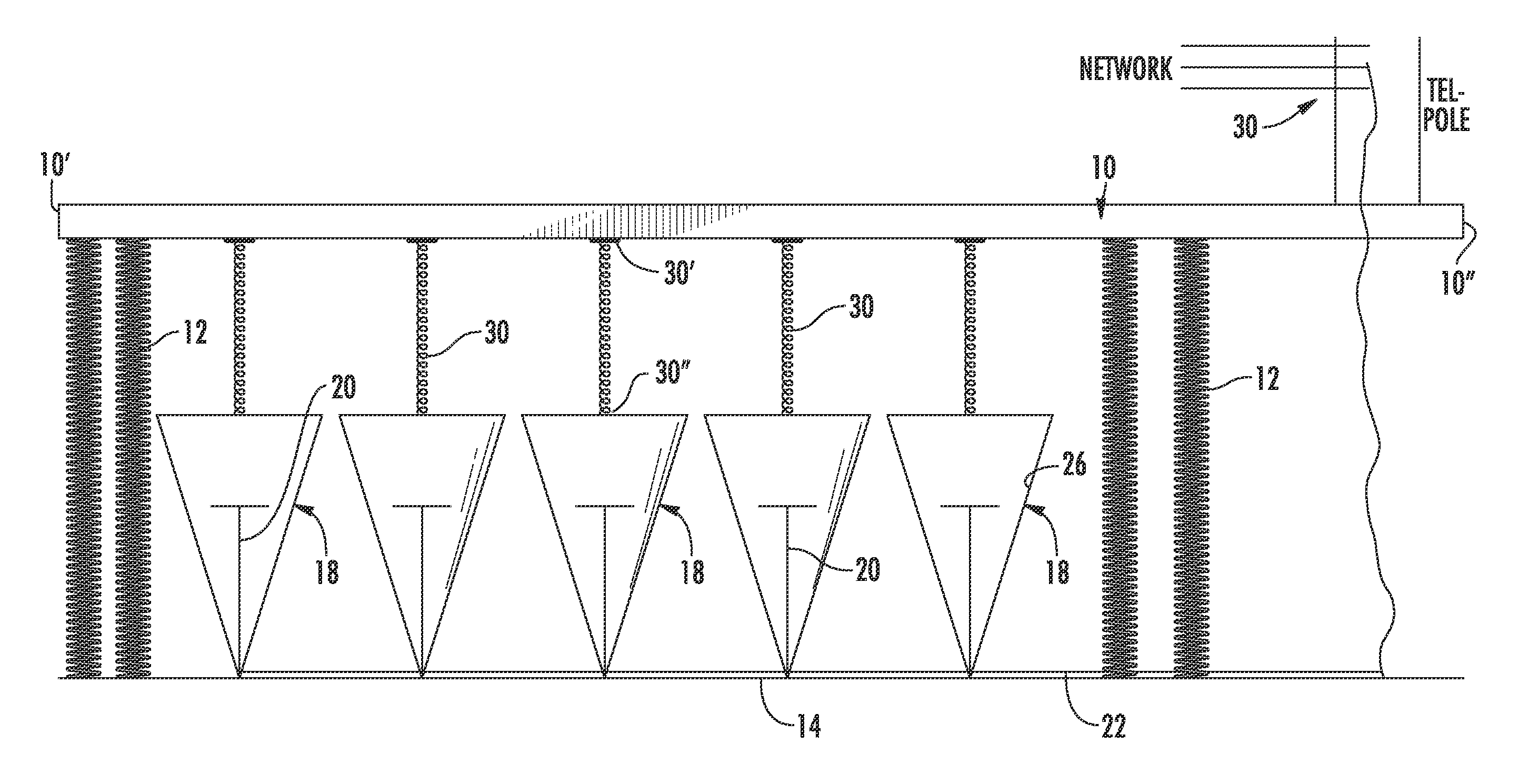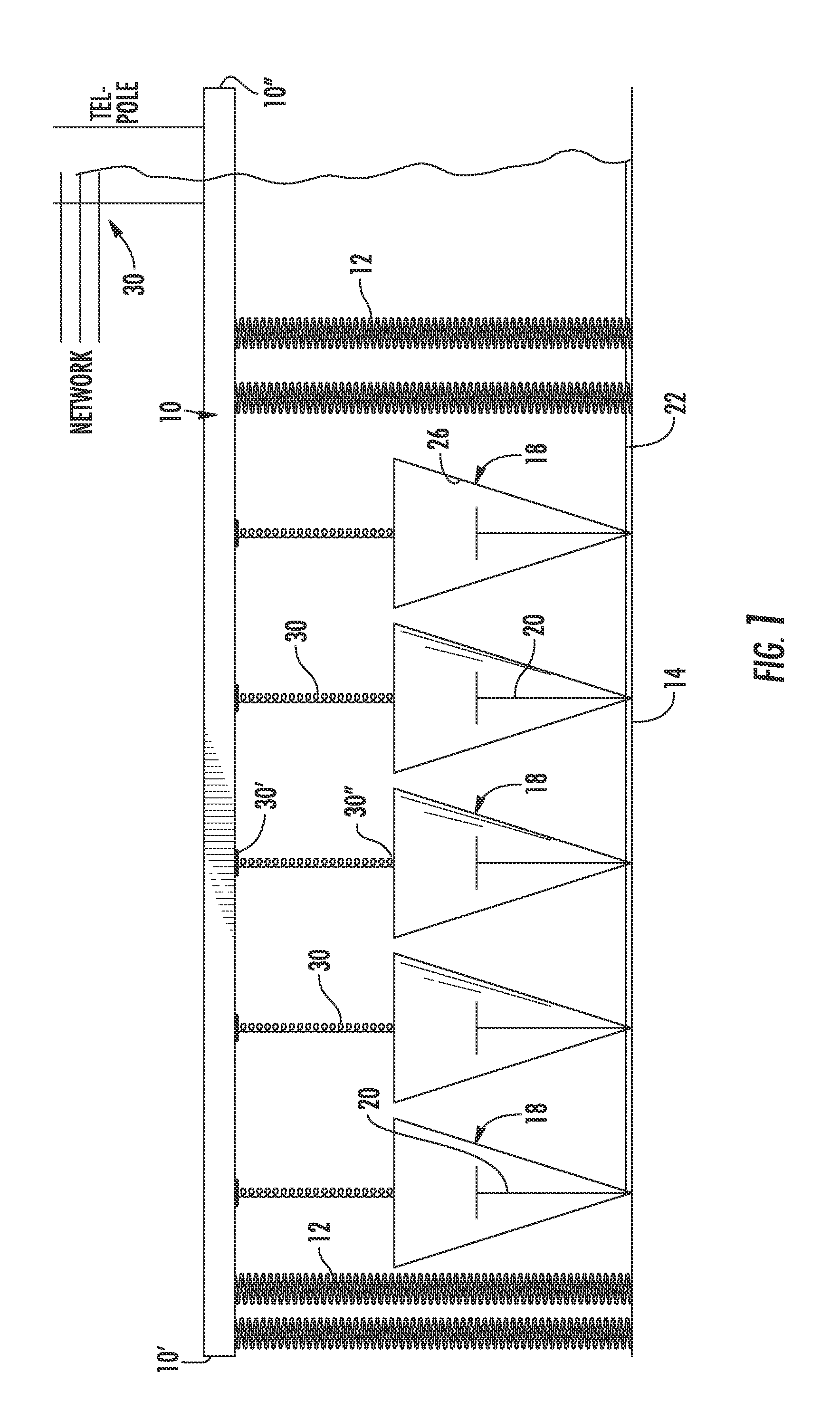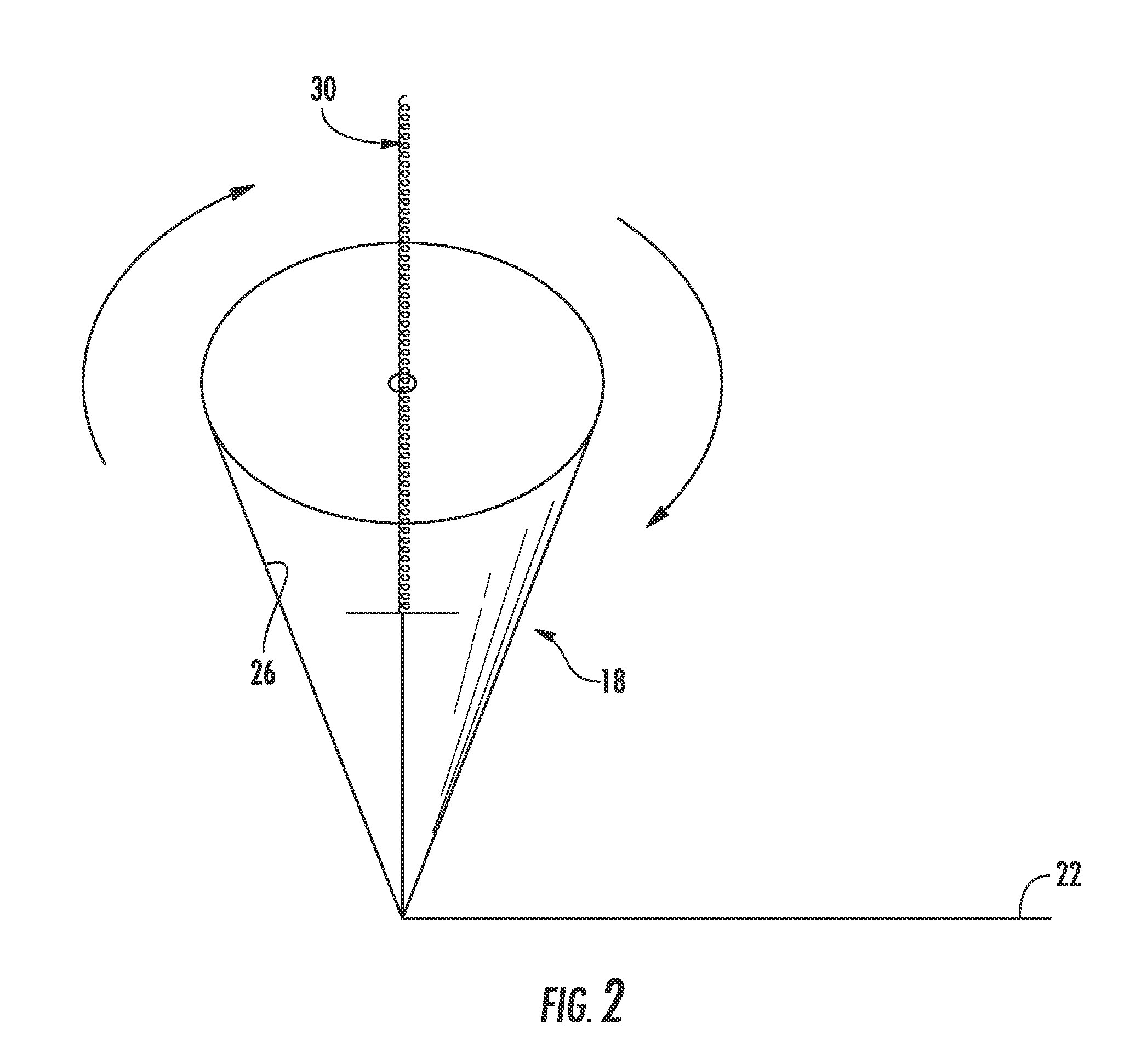Conversion of Kinetic Into Electric Energy Utilizing The Universal Principles of Gravity & Magnetism
a technology of gravity & magnetism and conversion of kinetic energy into electric energy, applied in the direction of dynamo-electric components, dynamo-electric machines, electrical equipment, etc., can solve the problems of high cost of fossil fuels used in the generation of electricity for complex and expensive prior-art systems, and high cost of fossil fuels used in the generation of electricity for both commercial and home use, etc., to achieve reliable, inexpensive and uncomplicated manner
- Summary
- Abstract
- Description
- Claims
- Application Information
AI Technical Summary
Benefits of technology
Problems solved by technology
Method used
Image
Examples
first embodiment
[0025]Referring now to the drawings in greater detail, and to FIGS. 1 and 2 for now, there is shown the first embodiment for generating electricity using the momentum of traveling, self-propelled vehicles over a road surface. The road surface in which the embodiment is employed is any highway or roadway containing one or more lanes. Floating or spring-based platforms 10 are constructed into the upper surface of the road, or highway, at downhill sections thereof in order to use gravity to offset the rolling friction between the tires of the vehicles and the platform, where each platform has a width approximately equal to the width of a lane across which it stretches. Each platform 10 may be flush with the remainder of the road surface at each end 10′, 10″, or may be slightly raised thereabove, in which case each end 10′, 10″ would be connected to a sloping transitional section that gradually transitions the passing vehicles for passing over the platform. Each platform 10 is spring-bi...
second embodiment
[0030]In a modification of FIGS. 3-8, instead of the use of the rollers 40, spinning or rotating cylinders 50 may be used, as shown in FIG. 9, with each cylinder having a length that substantially extends across the width of a lane of the roadway. Each cylinder 50 has an interiorly-embedded, electrically conducting copper wire or wires 52 which extend longitudinally axially in the interior thereof, through the stationary mounting shaft (not shown), with the ends 52′, 52″ thereof being output to a collective line coupling all of the interiorly-embedded, electrically conducting metal wires 52 together, for transmitting the electricity generated to a power grid or the battery-storage system, as explained above. As in the case of the rollers 40, each cylinder 50 is provided with interiorly-embedded, circumferential or annular magnets or magnetic material, or is made of composite material including magnetic properties so that. As the cylinders 50 rotate via contact with the tires of the ...
PUM
 Login to View More
Login to View More Abstract
Description
Claims
Application Information
 Login to View More
Login to View More - Generate Ideas
- Intellectual Property
- Life Sciences
- Materials
- Tech Scout
- Unparalleled Data Quality
- Higher Quality Content
- 60% Fewer Hallucinations
Browse by: Latest US Patents, China's latest patents, Technical Efficacy Thesaurus, Application Domain, Technology Topic, Popular Technical Reports.
© 2025 PatSnap. All rights reserved.Legal|Privacy policy|Modern Slavery Act Transparency Statement|Sitemap|About US| Contact US: help@patsnap.com



